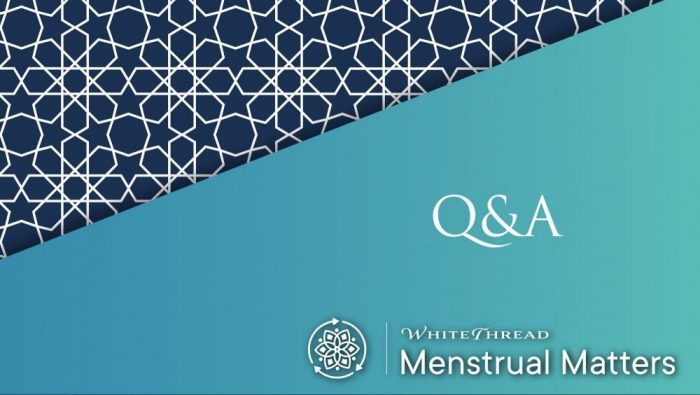
Basic Rulings of Menstruation
Assalaamualikum,
I hope You are all well, in sha Allah. I thank You for answering my previous questions, Your answers have provided much-needed clarity. I have recently started the Mastering the Fiqh of Menstruatruon Course. In sha Allah, through this course, I hope to become more confident in this area.
I wanted to clarify a couple of rulings that I have come across before, as I do not have references for them please:
– If one bleeds over the maximum (240 hours), is it correct that she refer to last month’s Haidh habit and then deduce from that which days of bleeding are considered Haidh and which are considered Istihadah?
For example, Sara bleeds for 13 days/nights, therefore she refers to last month’s Haidh Habit which was 8 days, and deduces from that 8 days as Haidh and 2 days as Istihadah.
– If one bleeds continuously, such that she experiences no Tuhr period then she refers to her most recent Tuhr Habit to deduce how many days are regarded as days of Tuhr. Then to determine how many days are regarded as Haidh she refers to her last Haidh Habit prior to this continuous bleeding.
– If one sees blood at a specific time and does not see it again until a few days later, as long as it is within 10 days/nights and preceded by a valid Tuhr Habit she will regard all those days in between the occurrences as days of Haidh (even though she was not bleeding during that time).
For example, Sara sees blood and is bleeding on Sunday, thereafter from Monday – Wednesday she doesn’t see or experience any bleeding. However, on Thursday, the blood appears again and she is now in a state of bleeding. Although Sara was not bleeding from Monday – Wednesday and there was no blood seen, in retrospect she regards those days as days of Haidh and is now considered to have been in the state of Haidh for 5 days.
ThankYou for Your guidance.
JazakAllahu Khairaa
Answer
In the name of Allah, the Inspirer of truth
May Allah accept your endeavor to seek this sacred knowledge and may He open our understanding for it.
Answer to Question 1:
The base principle is that a woman must refer to her previous habit in menstruation (hayd). In situations of irregular bleeding (istihada), an important principle is to compare her bleeding relative to her ‘place of habit.’ In doing this, there is a possibility that her bleeding could have come earlier than her due date, or that her bleeding is not aligning with her place of habit. Only those days in her place of habit will be hayd and the remaining will be istihada. Please refer to the tutorial on Number & Place.
Answer to Question 2:
It is correct that in continuous bleeding a previous purity (tuhr) and menstrual habit will be used to determine which days are hayd. However, it is not necessary for it to be the last habits, as only “valid” habits can be used. We use a woman’s record of bleeding to determine the last “valid” habit for hayd and purity.
Answer to Question 3:
As long as bleeding occurs after a valid purity and remains within the maximum time frame, it will all be hayd because bleeding does not have to be continuous. Monday to Wednesday will be a period of purity within the days of hayd referred to as legal blood.
One point regarding your understanding of “considered to have been in the state of Haidh for 5 days.” It is important to remember that 24 hours constitutes a full day. For example, if she began bleeding on Sunday at 1pm, one full day would be completed on Monday at 1pm.
And Allah knows best.



